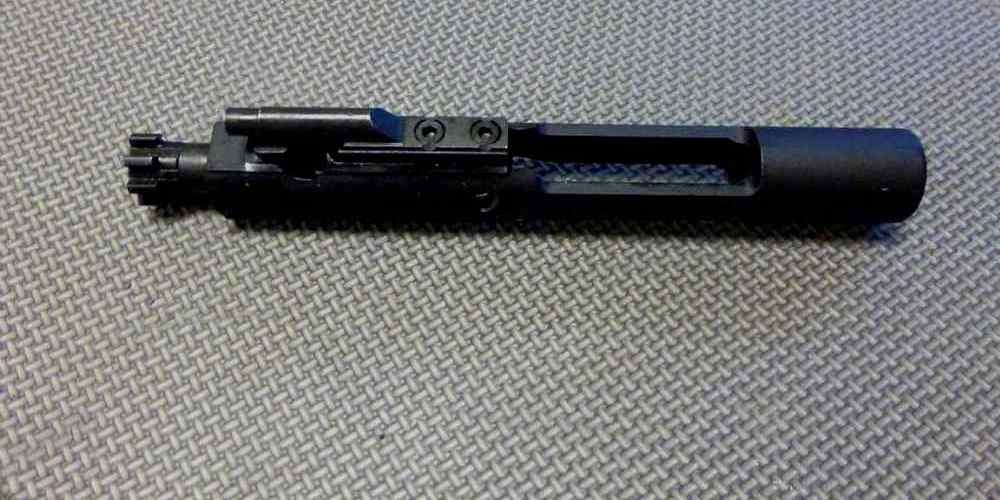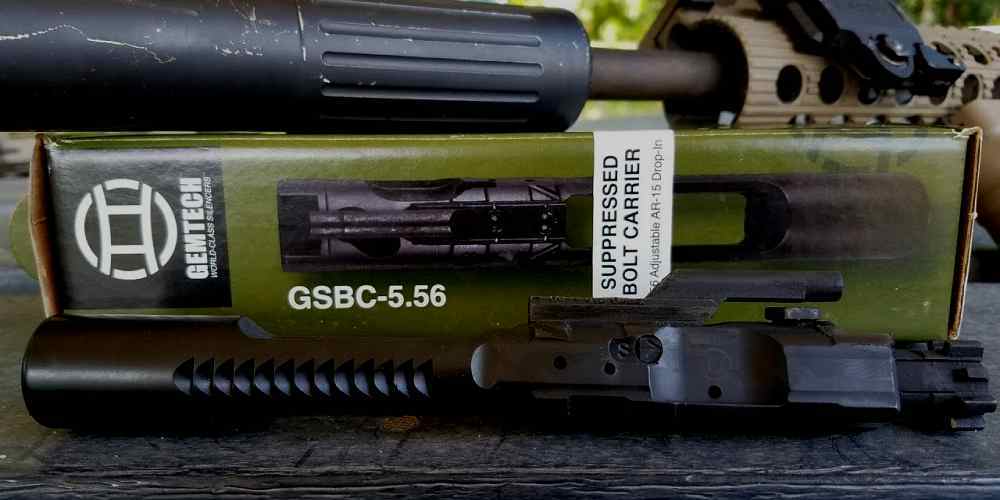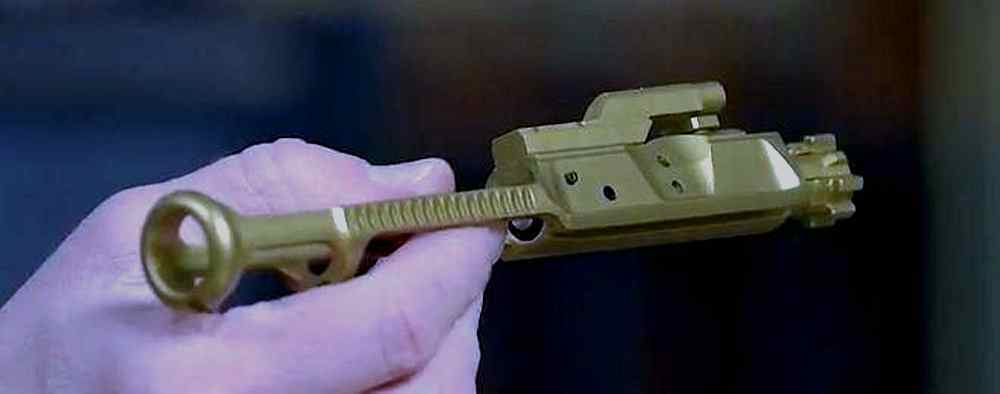“Unlock the potential of your AR15 with the right BCG choice.”
Pros and Cons of Full-Auto BCGs
When it comes to choosing the right bolt carrier group (BCG) for your AR15, there are a few key factors to consider. One of the most important decisions you’ll need to make is whether to go with a full-auto BCG or a semi-auto BCG. Both options have their own set of pros and cons, so it’s important to understand the differences before making a decision.
Let’s start by looking at the pros of using a full-auto BCG. One of the biggest advantages of a full-auto BCG is its increased durability. Full-auto BCGs are built to withstand the higher rates of fire associated with fully automatic firearms, so they tend to be more robust and long-lasting than their semi-auto counterparts. This can be especially beneficial for AR15 owners who shoot frequently or put their rifles through rigorous use.
Another advantage of full-auto BCGs is their compatibility with a wider range of ammunition. Because they are designed to handle the increased pressure and recoil of full-auto fire, full-auto BCGs can typically cycle a wider variety of loads without issue. This can be particularly useful for shooters who like to experiment with different types of ammo or who shoot in adverse conditions where ammunition performance can vary.
Additionally, full-auto BCGs tend to have a smoother cycling action than semi-auto BCGs. This can result in reduced felt recoil and improved overall shooting comfort. The smoother cycling action of a full-auto BCG can also lead to more consistent and reliable performance, which is important for shooters who demand precision and reliability from their firearms.
However, there are also some drawbacks to using a full-auto BCG. One of the main disadvantages is the added weight of a full-auto BCG compared to a semi-auto BCG. The extra mass of a full-auto BCG can increase the overall weight of your AR15, which may be a concern for shooters who prioritize a lightweight and maneuverable rifle.
Another potential downside of full-auto BCGs is their higher cost. Because they are built to withstand the rigors of full-auto fire, full-auto BCGs are typically more expensive than semi-auto BCGs. This can be a deterrent for budget-conscious shooters who are looking to save money on their build.
In conclusion, full-auto BCGs offer increased durability, compatibility with a wider range of ammunition, and a smoother cycling action compared to semi-auto BCGs. However, they also come with added weight and a higher price tag. Ultimately, the decision between a full-auto BCG and a semi-auto BCG will depend on your individual needs and preferences as a shooter. Consider your priorities and budget carefully before making a choice, and remember that both options have their own set of advantages and disadvantages.
Pros and Cons of Semi-Auto BCGs
When it comes to building or customizing your AR15, one of the key components to consider is the bolt carrier group (BCG). The BCG is essentially the heart of your rifle, responsible for cycling rounds, extracting spent casings, and loading new ones. There are two main types of BCGs to choose from: full-auto and semi-auto. In this article, we will delve into the pros and cons of semi-auto BCGs to help you make an informed decision for your AR15.

One of the primary advantages of a semi-auto BCG is its simplicity. Semi-auto BCGs are designed specifically for semi-automatic rifles, making them more streamlined and efficient for this type of firearm. This means that they are typically lighter in weight and have fewer moving parts, which can result in smoother cycling and improved overall performance.
Another benefit of semi-auto BCGs is their compatibility with a wider range of AR15 builds. Since semi-auto BCGs are specifically tailored for semi-automatic rifles, they are more likely to fit seamlessly into your AR15 without any modifications or adjustments. This can save you time and hassle when assembling or upgrading your rifle.
In addition, semi-auto BCGs are generally more affordable than their full-auto counterparts. This can be a significant factor for budget-conscious AR15 enthusiasts who want to get the most bang for their buck. By opting for a semi-auto BCG, you can still enjoy reliable performance without breaking the bank.
However, there are some drawbacks to consider when choosing a semi-auto BCG for your AR15. One potential downside is that semi-auto BCGs may not be as durable or robust as full-auto BCGs. Since semi-auto BCGs are designed for semi-automatic rifles, they may not be able to withstand the higher rates of fire that full-auto BCGs are built to handle. This could lead to increased wear and tear over time, potentially affecting the longevity of your BCG.
Another limitation of semi-auto BCGs is their limited customization options. Semi-auto BCGs are typically more standardized in design, which means that there may be fewer aftermarket upgrades or modifications available compared to full-auto BCGs. If you are someone who enjoys customizing your AR15 with unique components, a semi-auto BCG may not offer as much flexibility in this regard.
In conclusion, semi-auto BCGs have their own set of advantages and disadvantages that AR15 enthusiasts should consider when choosing the right BCG for their rifle. While semi-auto BCGs are simpler, more affordable, and compatible with a wider range of AR15 builds, they may not be as durable or customizable as full-auto BCGs. Ultimately, the decision between full-auto and semi-auto BCGs will depend on your specific needs and preferences as a shooter. By weighing the pros and cons of each type of BCG, you can make an informed choice that will enhance the performance and functionality of your AR15.
Performance Differences Between Full-Auto and Semi-Auto BCGs
If you’re an AR15 enthusiast, you know that the bolt carrier group (BCG) is a crucial component of your rifle. When it comes to BCGs, one of the key decisions you’ll need to make is whether to go with a full-auto or semi-auto BCG. While both options will work in your AR15, there are some important differences between the two that can impact performance.
One of the main differences between full-auto and semi-auto BCGs is the weight. Full-auto BCGs are typically heavier than their semi-auto counterparts. This extra weight can help to increase the dwell time of the bolt, which can improve reliability and reduce wear on your rifle. However, the added weight can also increase felt recoil, which may be a consideration for some shooters.
Another important difference between full-auto and semi-auto BCGs is the shape of the rear of the carrier. Full-auto BCGs have a longer rear section, which allows them to work with full-auto rifles that have a sear trip. Semi-auto BCGs, on the other hand, have a shorter rear section that is designed to work with semi-automatic rifles. While this may seem like a minor difference, it can impact the compatibility of the BCG with different AR15 configurations.
In terms of performance, full-auto BCGs are generally considered to be more reliable than semi-auto BCGs. The added weight and longer rear section of full-auto BCGs help to ensure that the bolt cycles smoothly and consistently, even in adverse conditions. This can be especially important for shooters who rely on their AR15 for self-defense or duty use.
On the other hand, semi-auto BCGs are often preferred by competition shooters and those looking to reduce felt recoil. The lighter weight of semi-auto BCGs can help to improve the overall balance of the rifle and make it easier to shoot accurately. Additionally, the shorter rear section of semi-auto BCGs can make them more compatible with aftermarket accessories, such as adjustable gas blocks.
Ultimately, the choice between a full-auto and semi-auto BCG will come down to your personal preferences and intended use for your AR15. If you prioritize reliability and durability, a full-auto BCG may be the best option for you. On the other hand, if you’re looking to reduce felt recoil and improve the handling of your rifle, a semi-auto BCG may be the better choice.
Regardless of which type of BCG you choose, it’s important to remember that regular maintenance and proper lubrication are key to keeping your AR15 running smoothly. Whether you opt for a full-auto or semi-auto BCG, taking care of your rifle will ensure that it performs at its best when you need it most.
In conclusion, understanding the differences between full-auto and semi-auto BCGs is essential for AR15 enthusiasts who want to get the most out of their rifles. By considering factors such as weight, shape, and performance, you can make an informed decision about which type of BCG is right for you. Whether you choose a full-auto or semi-auto BCG, investing in a high-quality component will help to ensure that your AR15 performs reliably and accurately for years to come.
Compatibility of Full-Auto and Semi-Auto BCGs with Different AR15 Builds
When it comes to building or customizing an AR15, one of the key components to consider is the bolt carrier group (BCG). The BCG is responsible for cycling the firearm and is crucial to its overall performance. One common debate among AR15 enthusiasts is whether to use a full-auto BCG or a semi-auto BCG. Understanding the differences between these two types of BCGs can help you make an informed decision based on your specific needs and preferences.
Full-auto BCGs are designed to work in fully automatic firearms, where the bolt carrier group needs to cycle at a much faster rate than in a semi-automatic firearm. These BCGs typically have a heavier mass and a longer dwell time, allowing them to handle the increased pressure and heat generated by rapid firing. While full-auto BCGs can be used in semi-automatic AR15s, they are not necessary for most civilian applications and may add unnecessary weight to the firearm.
On the other hand, semi-auto BCGs are specifically designed for use in semi-automatic firearms. They are lighter in weight and have a shorter dwell time compared to full-auto BCGs. This makes them more suitable for civilian use, where rapid firing is not a primary concern. Semi-auto BCGs are generally more than sufficient for most AR15 builds and can help reduce recoil and improve overall handling.
When it comes to compatibility with different AR15 builds, both full-auto and semi-auto BCGs can be used in most configurations. However, there are a few factors to consider when choosing the right BCG for your build. One important consideration is the type of ammunition you plan to use. Full-auto BCGs are better suited for use with higher pressure ammunition, such as military surplus or +P rounds, as they can handle the increased stress and heat generated by these cartridges.
Another factor to consider is the type of gas system your AR15 has. Full-auto BCGs are typically better suited for use with carbine-length gas systems, as they can help mitigate the increased bolt carrier velocity and reduce wear on the firearm. Semi-auto BCGs, on the other hand, are more compatible with mid-length or rifle-length gas systems, which provide a smoother cycling action and reduce felt recoil.
It is also important to consider the overall weight and balance of your AR15 when choosing between a full-auto and semi-auto BCG. Full-auto BCGs are heavier than semi-auto BCGs, which can affect the overall feel and handling of the firearm. If you prefer a lighter and more maneuverable AR15, a semi-auto BCG may be the better option for your build.
In conclusion, understanding the differences between full-auto and semi-auto BCGs is essential for AR15 enthusiasts looking to customize their firearms. While both types of BCGs are compatible with most AR15 builds, it is important to consider factors such as ammunition type, gas system length, and overall weight and balance when choosing the right BCG for your specific needs. By taking these factors into account, you can ensure that your AR15 performs optimally and meets your expectations on the range or in the field.
Factors to Consider When Choosing Between Full-Auto and Semi-Auto BCGs
When it comes to building or customizing an AR15, one of the key components to consider is the bolt carrier group (BCG). The BCG is responsible for cycling the action of the rifle, extracting and ejecting spent casings, and loading new rounds into the chamber. One of the decisions that AR15 enthusiasts often face is whether to go with a full-auto BCG or a semi-auto BCG. While both options will work in a standard AR15 build, there are some key differences to consider when making your decision.
One of the main differences between a full-auto BCG and a semi-auto BCG is the weight. Full-auto BCGs are typically heavier than semi-auto BCGs, due to the additional mass needed to properly cycle in full-auto firearms. This extra weight can help to reduce felt recoil and improve overall reliability, especially in high round count scenarios. However, the added weight can also lead to increased wear and tear on the rifle, as well as potentially affecting the rifle’s balance and handling characteristics.
On the other hand, semi-auto BCGs are lighter and more compact, making them a popular choice for shooters looking to reduce weight and improve maneuverability. While they may not offer the same level of recoil reduction as a full-auto BCG, they can still provide reliable performance in most shooting situations. Additionally, the lighter weight of a semi-auto BCG can help to reduce wear and tear on the rifle, as well as improve the overall balance and handling characteristics of the firearm.
Another factor to consider when choosing between a full-auto BCG and a semi-auto BCG is the type of ammunition you plan to use. Full-auto BCGs are designed to handle a wider range of ammunition types, including higher pressure loads and steel-cased ammunition. This can be beneficial for shooters who like to experiment with different types of ammo or who shoot in adverse conditions where traditional brass-cased ammunition may not be readily available.
On the other hand, semi-auto BCGs are typically designed to work best with standard brass-cased ammunition. While they can still function with steel-cased or higher pressure loads, they may not be as reliable or durable as a full-auto BCG in these situations. If you plan on shooting a lot of surplus or steel-cased ammo, or if you want the flexibility to shoot a wide variety of loads, a full-auto BCG may be the better choice for your AR15 build.
Ultimately, the decision between a full-auto BCG and a semi-auto BCG will come down to your personal preferences and shooting style. If you prioritize reliability and durability, a full-auto BCG may be the better option for you. On the other hand, if you value weight savings and maneuverability, a semi-auto BCG may be the way to go. Whichever option you choose, make sure to do your research and consider all factors before making your final decision. With the right BCG in your AR15, you can ensure reliable performance and enjoy shooting your rifle for years to come.









